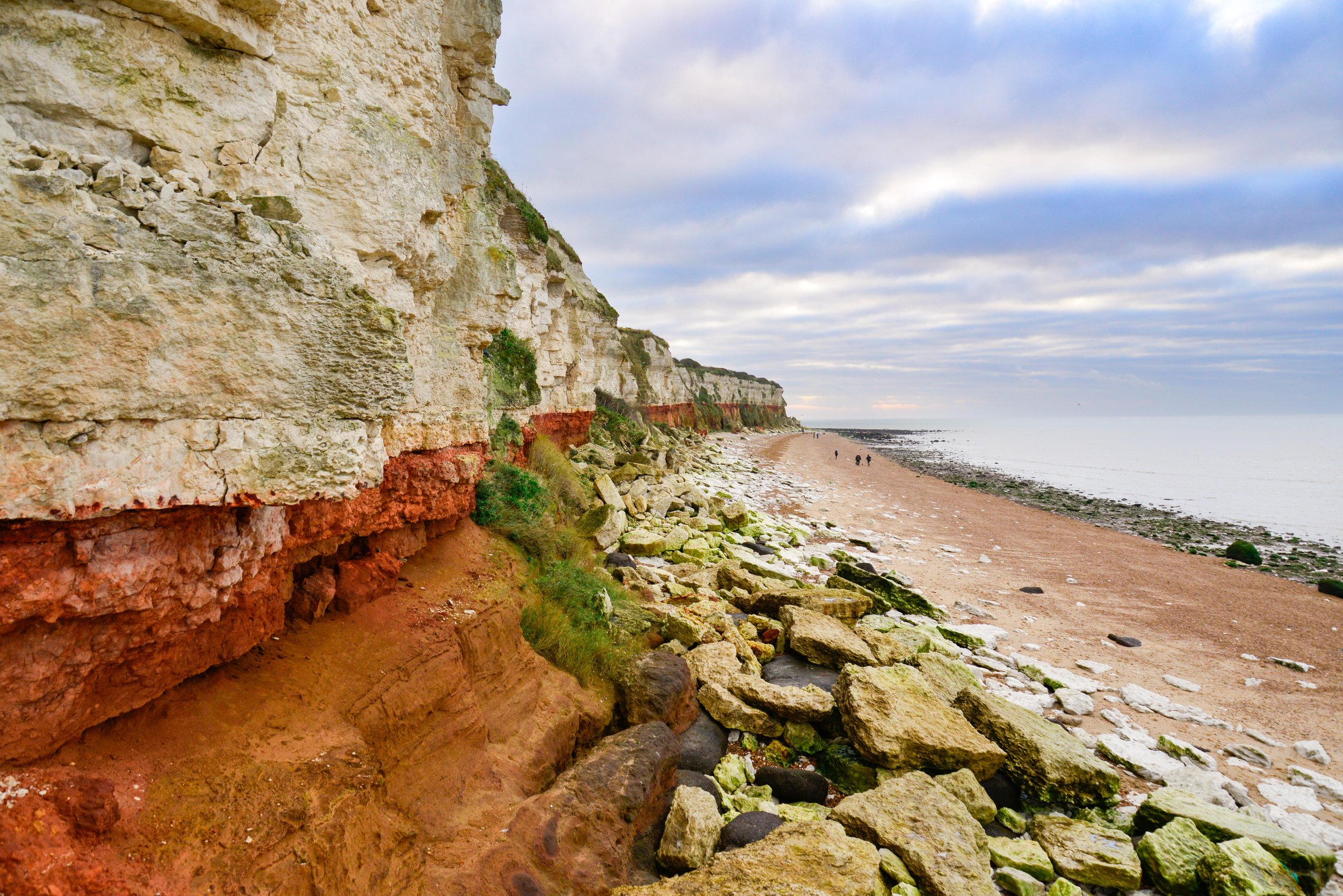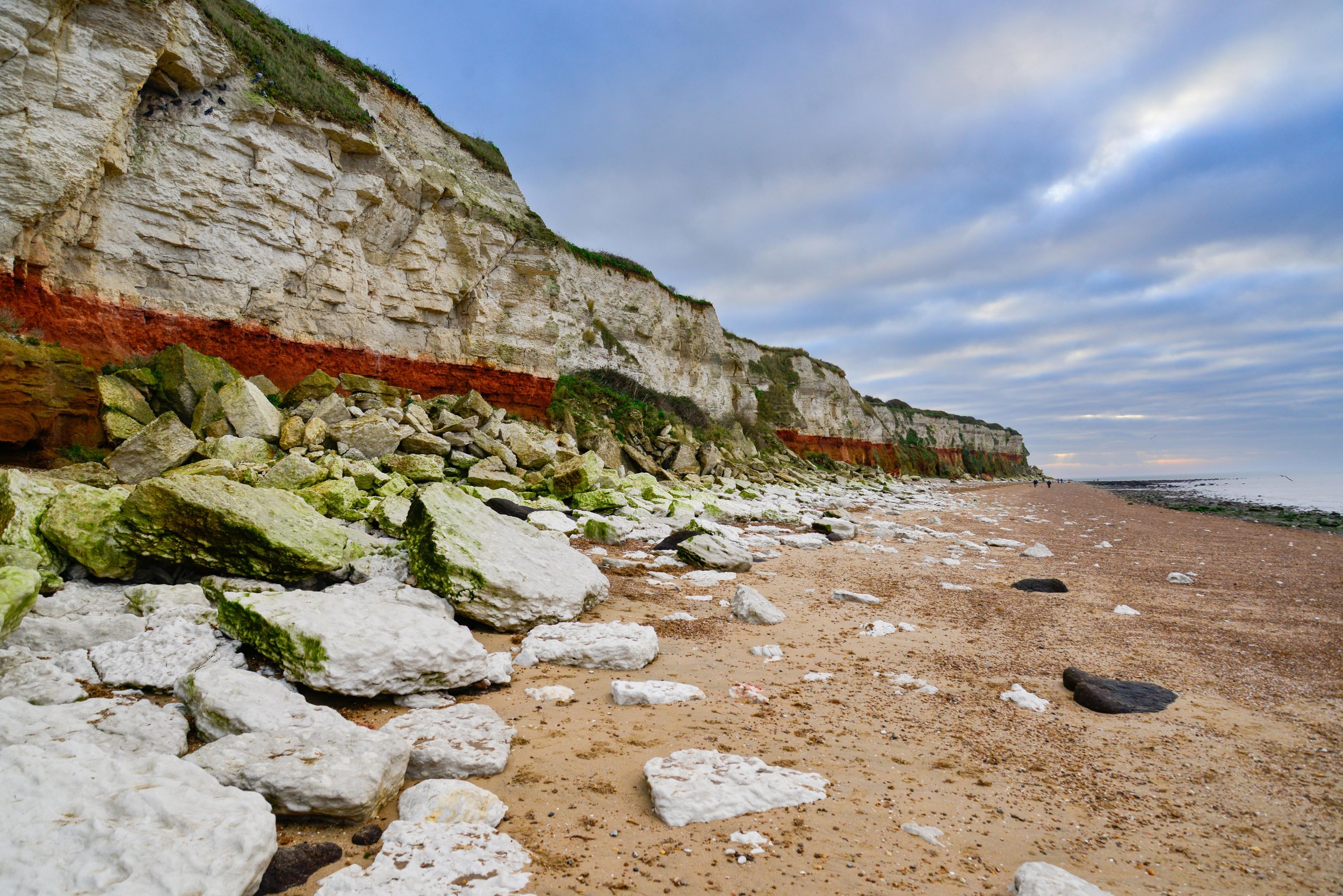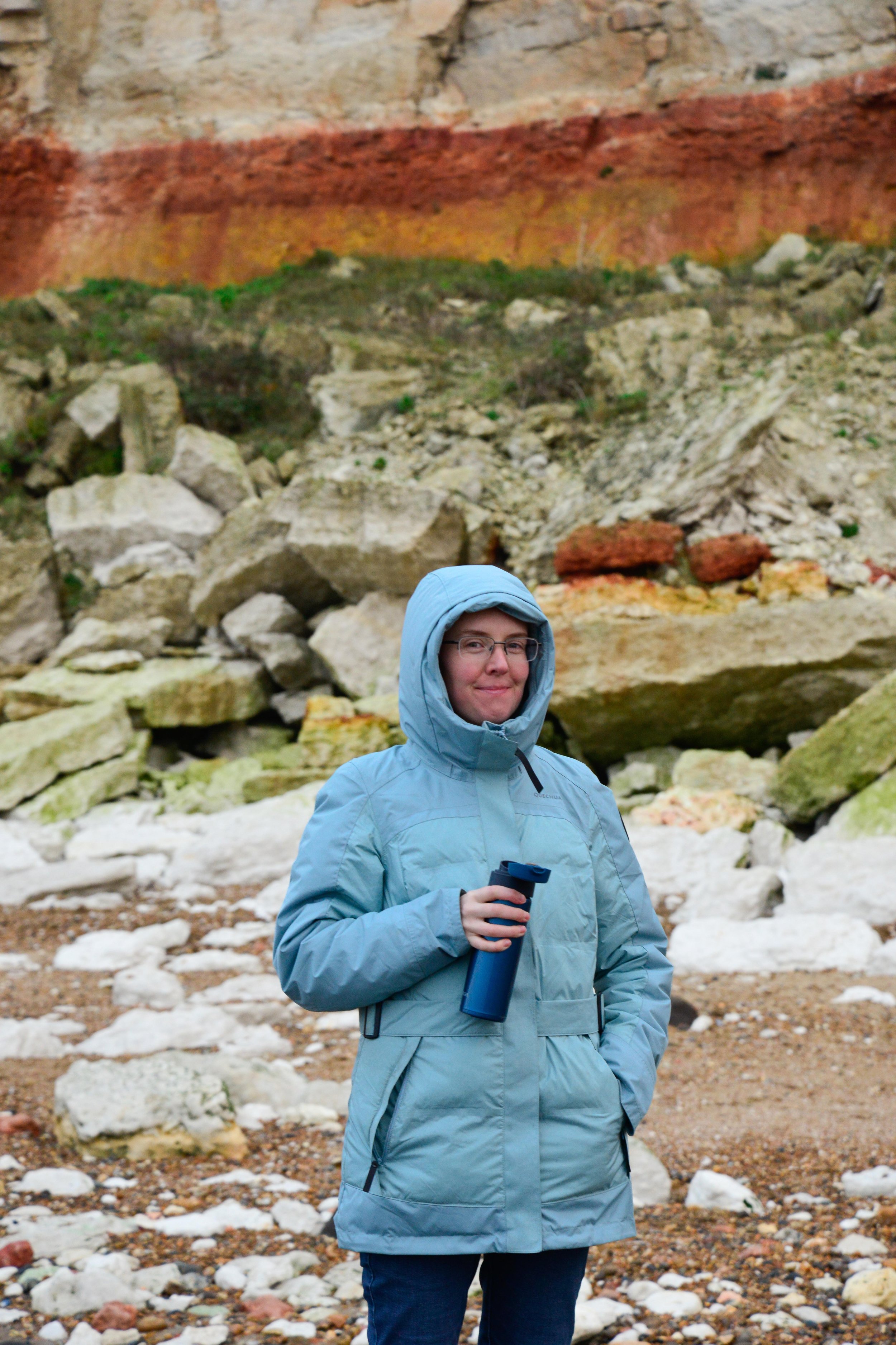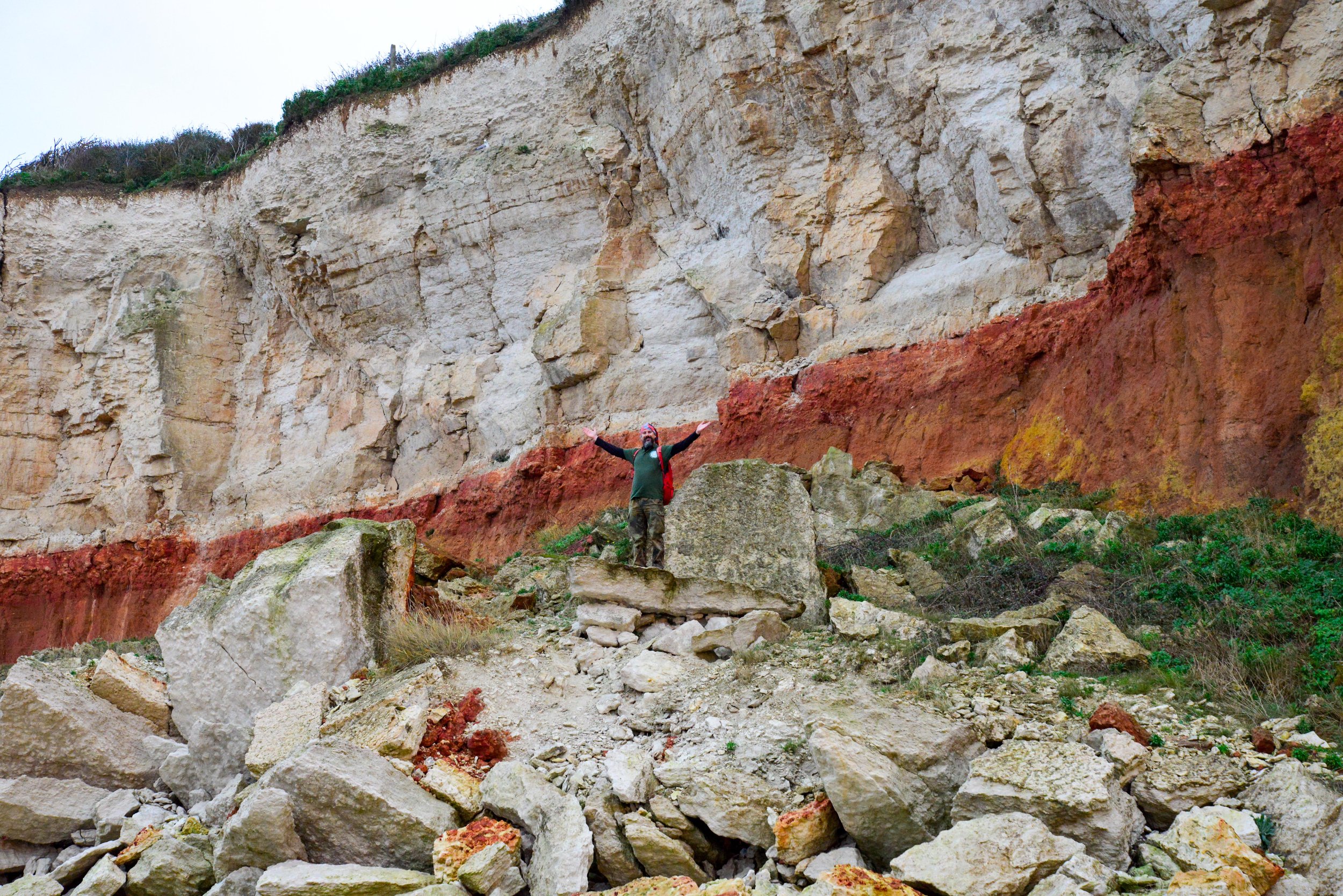
> TRAVEL FILES <
THE SIGN HUNTERS
@thesignhunters • #thesignhunters • #handfulsadventures • #apiginchina
ENGLAND: Hunstanton Cliffs - A Geological Marvel
Written by Laszlo, 08 December 2024
Hunstanton Cliffs, as the name suggests, are located in the seaside town of Hunstanton in Norfolk, England. This remarkable natural feature is designated as a Site of Special Scientific Interest (SSSI) due to its rich biological and geological significance. Despite being on the eastern side of Britain, the cliffs uniquely face west, overlooking The Wash, a large bay and estuary that separates Norfolk from Lincolnshire.
The cliffs are famed for their vivid bands of colour, with each hue representing a distinct type of rock. These layers offer a fascinating insight into the area’s geological history. While the stratigraphy reveals significant complexity on closer examination, focusing on the three primary rock types provides a solid foundation for understanding this unique coastal feature.
1. Carrstone Formation (Base Layer): At the base of the cliffs lies the Carrstone Formation, a reddish-brown sandstone conglomerate often referred to as "ginger carrstone" due to its resemblance to gingerbread. This sedimentary rock, formed during the Lower Cretaceous Period (Albian Stage, approximately 108 million years ago), originated in shallow marine environments. Carrstone is a notable building material in north Norfolk and owes its distinctive red colour to iron oxide within the sediment. The amount of iron oxide determines its variant, such as the less common grey "silver carrstone". This rock is typically pebbly and contains minerals like feldspar and glauconite nodules, as well as small amounts of fossils.
2. Hunstanton Formation (Middle Layer): Above the carrstone lies a striking red layer often mistaken for limestone but actually composed of chalk. This layer, part of the Hunstanton Formation, was also formed during the Lower Cretaceous (Albian Stage, approximately 101 million years ago) under deeper marine conditions. The red hue of this chalk layer results from the presence of limonite, a type of iron ore. The Hunstanton Formation is rich in macrofossils, making it a treasure trove for palaeontologists and fossil enthusiasts. This layer is exceptionally well-exposed at Hunstanton, contributing significantly to the site's scientific value.
3. Ferriby Chalk Formation (Top Layer): Capping the cliffs is the Ferriby Chalk Formation, a white-grey chalk layer deposited during the Cenomanian Stage at the start of the Upper Cretaceous Period (approximately 99 million years ago). This rock, formed under deep marine conditions, often contains fossils and is characterised by a series of distinct beds rather than a uniform structure.
Hunstanton Cliffs are not only a visual spectacle but also a rich source of geological and historical insight. Their unique stratigraphy tells a story of changing environments over millions of years, from shallow marine to deep-sea conditions.
As we plan to visit this extraordinary site more frequently in the future, we aim to update this page with further details and observations. For the latest updates, keep an eye on our newsfeed.
Now, let’s embark on a short journey to the mesmerising Hunstanton Cliffs!















































